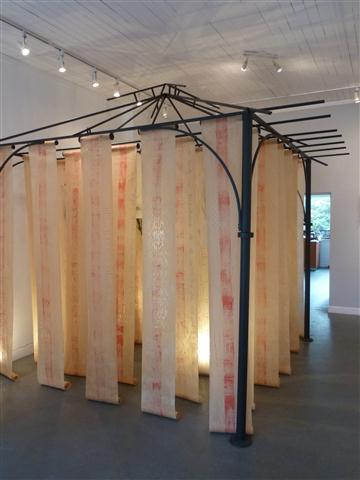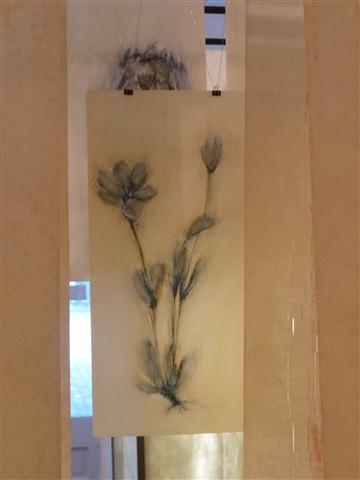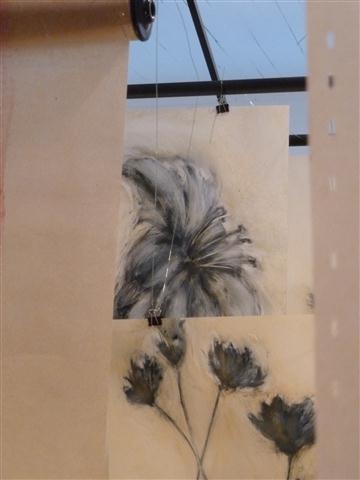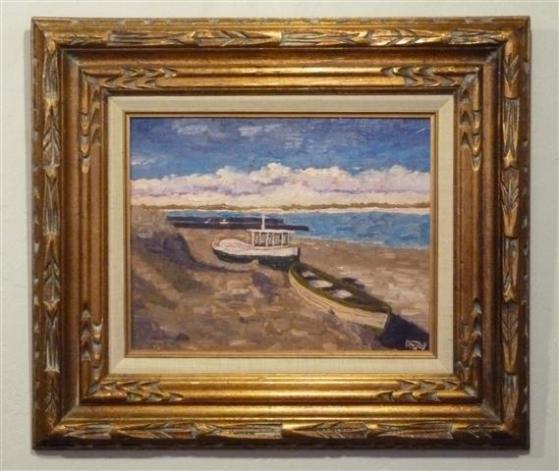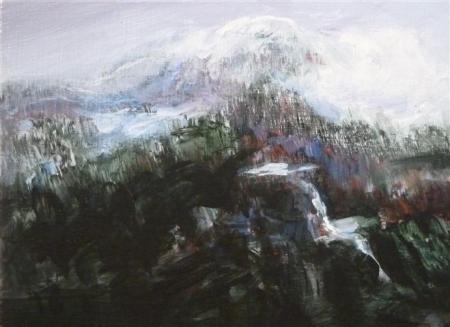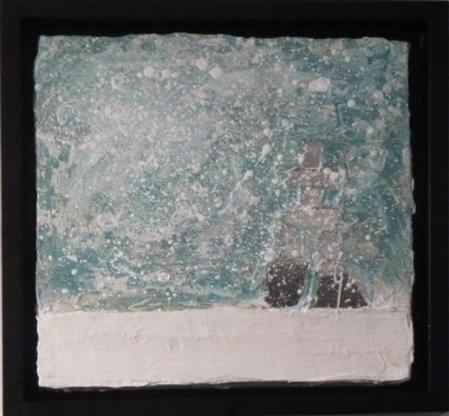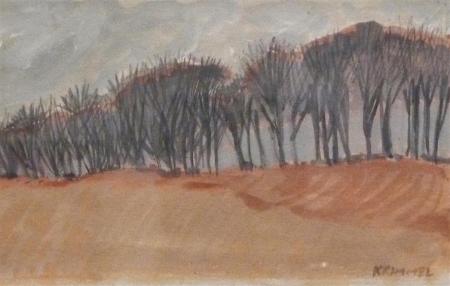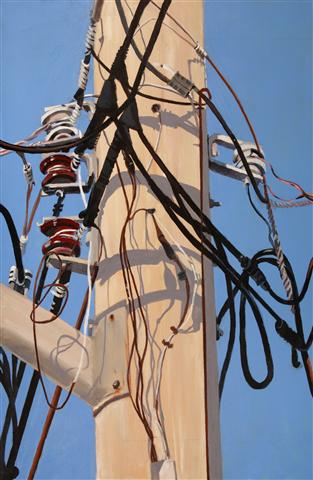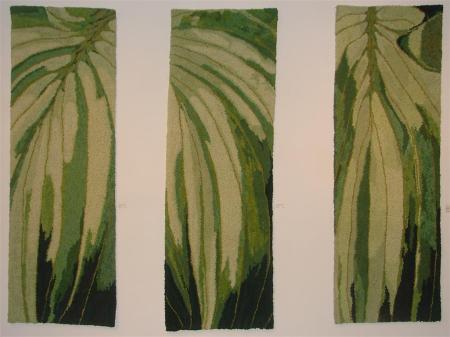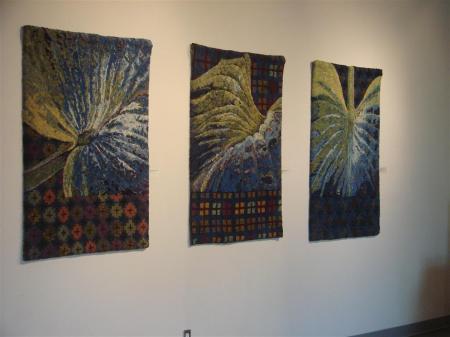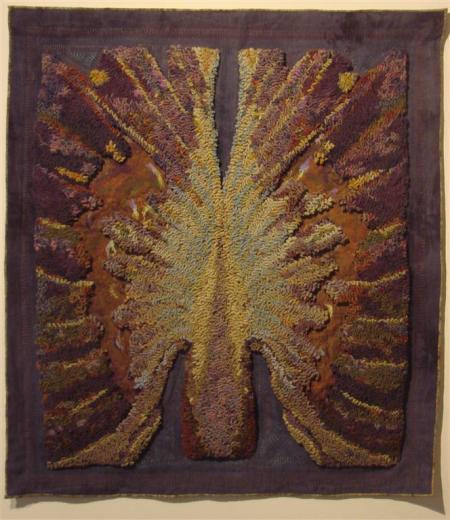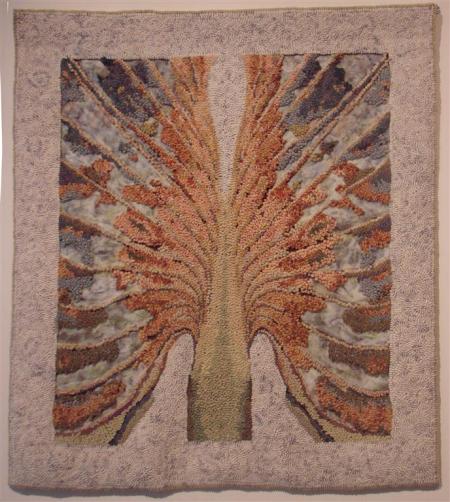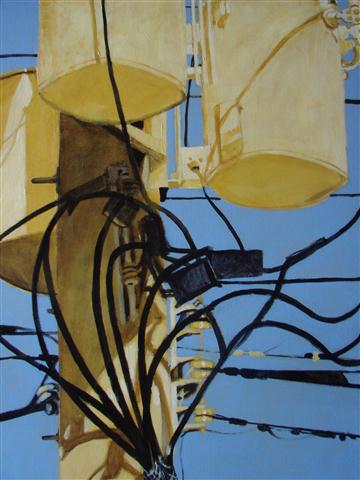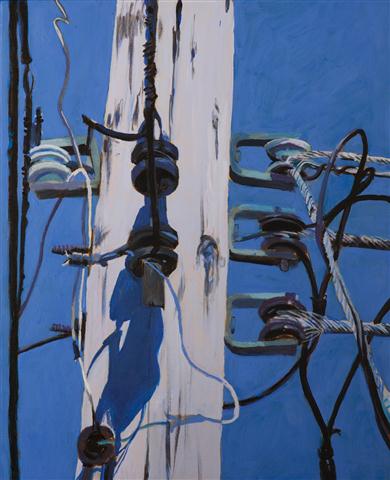Mausoleum: Red List Lament, Doris Auxier, 2012, Metal framework, piano scrolls, vellum, paint, light box.
Is it a temple or a mausoleum?
Disparate elements in this installation create an eerie, warm feeling. From a distance, I felt as if I were being drawn into a Zen temple with oriental scrolls marked with calligraphy. A closer view reveals that the scrolls are not oriental at all, but player piano scrolls with sentimental words to old songs printed on the side to match the tempo or the music as it plays. The words, like Asian writing, read from bottom to top, contrary to our usual top down habit of reading. Hanging between these scrolls are ephemeral charcoal drawings of plants made on vellum or parchment paper, glazed with beeswax to create the same golden timbre of the piano rolls. They glow slightly. An odor of beeswax has all but been erased but lingers gently.
In the centre of the arrangement, there is a four-foot tall glass container lined with fiber glass insulation and lit from the interior. It has the feel of a stele or a mortuary box. It’s as if it contains a soul. A dying soul.
Detail, paintings on vellum, with beeswax
The piece is, in fact, a lament. It documents 14 species of native plants that have almost become extinct in the Gary Oaks area of Vancouver Island, near the city Victoria. They are red-listed – a designation that is assigned when a plant becomes endangered and threatened with extinction.
Doris Auxier, the artist of this deeply sensitive installation, is keenly involved with using her artwork to alert viewers to the ecological, environmental situations concerning endangered species.
She explains:
“While player piano scrolls are still in existence, the piano itself is rare. This makes the scrolls that were dependent upon the piano/infrastructure/system virtually useless, existing mainly in antique shops and museums. Similarly, the plants on the red list can be grown from seeds saved from the plants, but they can’t survive if the ecosystem is destroyed. The plants become museum objects that exist in research gardens and other limited environments.”
Mausoleum: Red List Lament, is a reflection on nature, displacement and loss.
Detail, charcoal on vellum, beeswax
Accompanying Auxier in this exhibition, print maker, Edith Krause has created a series of prints beautifully constructed, on the same theme.
She too laments the loss of habit, citing the importation of non-indigenous plants whose incompatibility with the existing ecosystem results in a disastrous destruction of the local plants. When an early settler, Scotsman, planted a bit of broom he brought with him from his homeland – that hardy shrub with a cheery yellow flower – little did he think that the plant would aggressively reproduce to the point where it would rob the delicate native plants of their habitat. It’s the well-known “Butterfly effect” where a tiny decision ends up playing havoc with the environment, inflicting irreparable damage.
The Butterfly Effect No. 1: Western Sulphur, Edith Krause, Screen-print, digital print, acrylic, plywood, hardware
Each of her art pieces consists of a Plexiglas panel suspended a half-inch in front of a secondary image on plywood. The base image on the plywood appears to be a close-up view of butterfly wing, while the suspended image in front of it on Plexi is a map of the Victoria area where loss is occurring. Superimposed on the map in black is a screen print of one of the invasive species causing the decline of the Garry Oak; like an obliterating force.
These “prints” are beautifully executed. The effect of transparency gives depth to the images. The three-dimensionality produces delicate shadows. It confirms the fragility of the plants, while the map imagery underlines that the city has superimposed itself upon a natural setting, disrupting the natural order and contributing to the demise of endangered species.
This is a thoughtful exhibition worth seeing. It’s at the Fort Gallery until December 2nd, 2012. The address is 9048 Glover Road in Fort Langley, B.C. Hours are Wednesday to Sunday, noon to 5 p.m.
